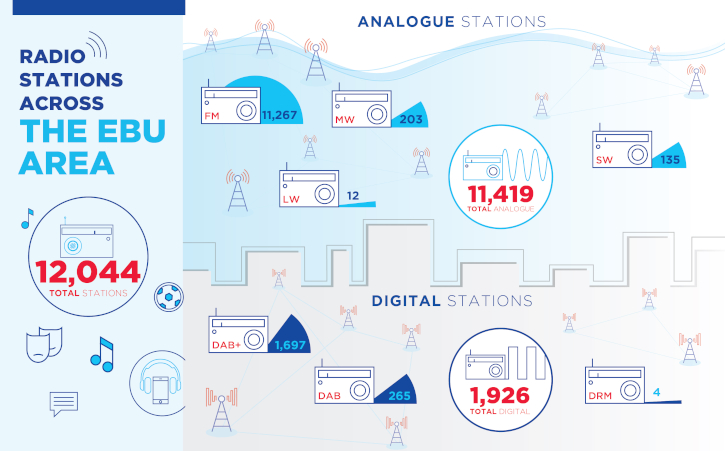The author is manager of the Media Intelligence Service at the European Broadcasting Union.
In these days of flashy audio innovations — with professionals, the trade press and dedicated events and conferences often focusing on podcasts, vocal assistants and social audio — we tend to forget the central role that old-fashioned and resilient broadcast radio plays in peoples’ lives.
At the EBU, we estimate that broadcast radio still represents between 85 and 90% of total radio consumption, which remains the bulk of audio consumption.
[Read: The Great Unbundling of Radio]
To understand the situation of broadcast radio, we have recently conducted research on the distribution networks used by radio services in Europe and the northern African territories that form part of the EBU, i.e. in 56 countries with a total population of more than 1 billion.
Many readers will no doubt be surprised to learn that our census found more than 12,000 radio services across the area. These are services operating each under their own brand, independently from the number of frequencies or transmitters.

Less surprisingly, 95% of those services broadcast in FM. This sends out a strong signal showing how prevalent FM remains.
Of course, the picture on the ground is more diverse, from Southern Europe where dials are typically overcrowded to Algeria, the sole remaining public radio monopoly in the area, and on to Norway, the only country to have shut down analog FM radio nationwide. Although some countries still grant FM licenses, the total number of services in this band is on the decrease.
The future looks darker for other analog networks, medium- and longwave. There are already 19 countries with no medium-wave services, although the U.K. still operates 69 services in that band, nearly as many as all 27 countries of the European Union taken together, where 74 services were identified.
There are only 12 services available in longwave, down from 21 in 2017 and 18 in 2019. Those originate in 10 countries, with public radio in Algeria and Iceland broadcasting two different signals. The LW band is only used for radio in Region 1 of the ITU, and outside the area covered by our study, in Mongolia and Turkmenistan.
As the reader may guess, digital radio broadcast networks are the fastest-growing. In 2021 nearly 2,000 different services were identified, a 23% increase in only two years, with no sign of slowing down short term. Again, the U.K. is an outlier here, with 80% of the 265 DAB stations identified. Meanwhile, DAB+ continues gaining ground.
And what about international radio? More shortwave services are appearing, but often at a high cost: large, well-known broadcasters are turning away from a bandwidth that is increasingly being taken over by religious denominational and other niche services. DRM, for its part, has not been embraced so far as a viable digital alternative to shortwave.
Comment on this or any story. Email mailto:[email protected] with “Letter to the Editor” in the subject field.









